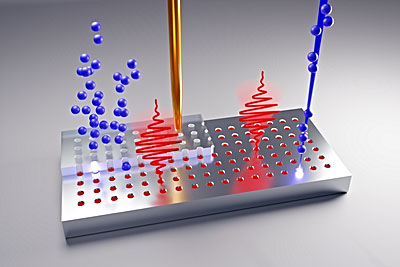Single-Photon Emitters: The Ultimate Quantum Light Sources
What are Single-Photon Emitters?
Single-photon emitters are quantum systems that can generate individual photons on demand, one at a time. These emitters are essential building blocks for quantum technologies, including quantum communication, quantum cryptography, and quantum computing. They provide the ultimate control over light at the single-photon level, enabling the manipulation and encoding of quantum information.

Key Properties of Single-Photon Emitters
Single-photon emitters exhibit several key properties that distinguish them from classical light sources:
- Photon Statistics: Single-photon emitters generate light with a sub-Poissonian photon number distribution, meaning that the probability of emitting two or more photons simultaneously is significantly lower than that of a classical light source. This property is crucial for applications that require a high degree of photon purity and indistinguishability.
- Quantum Efficiency: The quantum efficiency of a single-photon emitter refers to the probability of generating a single photon per excitation event. High quantum efficiency is essential for efficient and reliable single-photon generation, as it minimizes the influence of competing non-radiative processes.
- Photon Indistinguishability: Single-photon emitters can generate photons that are indistinguishable from each other in terms of their spectral, temporal, and polarization properties. This indistinguishability is a key requirement for quantum interference and entanglement, which are the basis for many quantum information processing protocols.
Types of Single-Photon Emitters
Various quantum systems can serve as single-photon emitters, each with its unique properties and advantages:
Quantum Dots
Quantum dots are nanoscale semiconductor structures that confine electrons and holes in a small volume, resulting in discrete energy levels. When an electron-hole pair recombines, a single photon is emitted. Quantum dots can be fabricated using various materials, such as III-V semiconductors (e.g., InAs, GaAs) or II-VI semiconductors (e.g., CdSe, CdTe), and can be embedded in different host matrices or integrated into photonic structures.
Color Centers in Diamond
Color centers in diamond, such as the nitrogen-vacancy (NV) center and the silicon-vacancy (SiV) center, are atomic-scale defects that can emit single photons. These color centers are particularly attractive due to their room-temperature operation, long spin coherence times, and potential for integration with diamond-based photonic and electronic devices.
Single Molecules
Single molecules, such as organic dye molecules or fluorescent proteins, can also act as single-photon emitters. These molecules can be embedded in a solid-state matrix or trapped in a liquid or gas phase. Single-molecule emitters are promising for applications in quantum sensing and imaging, as they can provide nanoscale resolution and sensitivity.
Applications of Single-Photon Emitters
Single-photon emitters find applications in various quantum technologies:
Quantum Cryptography
Single-photon emitters are the core components of quantum key distribution (QKD) systems, which enable secure communication by encoding information in the quantum states of single photons. The use of single-photon emitters ensures the security of the communication channel against eavesdropping and tampering.
Quantum Computing
Single-photon emitters can serve as qubits, the building blocks of quantum computers. Photonic qubits based on single-photon emitters offer advantages such as low decoherence, fast operation, and compatibility with existing optical communication infrastructure. Additionally, single-photon emitters can be used to generate entangled photon pairs, which are essential for quantum information processing tasks such as quantum teleportation and quantum error correction.
Quantum Sensing and Metrology
Single-photon emitters can enhance the sensitivity and resolution of quantum sensors and quantum metrology systems. For example, NV centers in diamond can be used as nanoscale magnetic field sensors, enabling the detection of weak magnetic fields with high spatial resolution. Single-photon emitters can also improve the precision of optical interferometry and atomic clocks.
Challenges and Future Perspectives
Despite significant progress in the development of single-photon emitters, several challenges remain to be addressed for their widespread application. One key challenge is the scalability and integration of single-photon emitters into complex quantum systems and devices. This requires the development of advanced nanofabrication techniques and the optimization of emitter-photonic structure interfaces.
Another challenge is the improvement of single-photon emitter performance, including increasing the quantum efficiency, reducing the spectral linewidth, and enhancing the photon indistinguishability. Researchers are exploring various strategies, such as strain engineering, electric field tuning, and photonic cavity coupling, to overcome these limitations.
Future research directions in single-photon emitters include the development of new emitter materials and platforms, the integration of single-photon emitters with quantum memories and processors, and the realization of large-scale quantum networks based on single-photon communication. The advancements in single-photon emitter technology will continue to drive the progress of quantum information science and enable new applications in secure communication, computing, and sensing.
Further Reading
2D Materials and Applications, Atomically-thin single-photon sources for quantum communication
Science Advances, On-chip scalable highly pure and indistinguishable single-photon sources in ordered arrays: Path to quantum optical circuits
physica status solidi (b) – basic solid state physics, Single-Photon Emitters in Layered Van der Waals Materials
